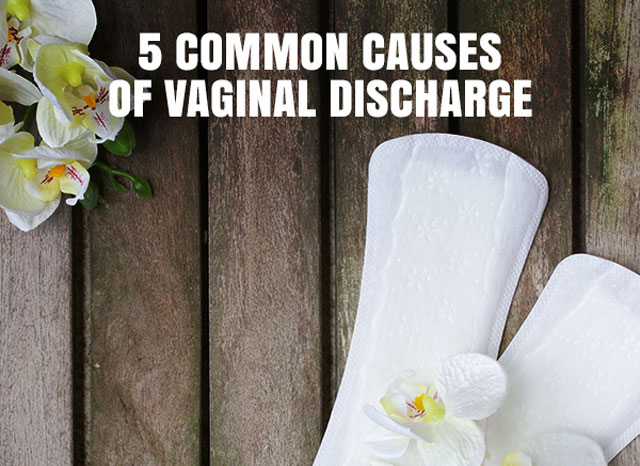
Vaginal discharge can happen for a number of reasons and is a healthy part of being a woman. If you notice changes, then there may be an underlying problem that needs to be addressed.
- Chlamydia
Chlamydia is a sexually transmitted infection that’s very common. It can be transmitted through intercourse or genital contact. Men and women are both susceptible. Symptoms include lower abdominal pain, burning sensation while urinating, painful intercourse, and a yellow or green vaginal discharge.
- Yeast Infection
Yeast infections are also very common and are usually easy to treat. This condition is caused by the Candida albicans fungus and includes burning, itching, soreness, redness, vaginal swelling, and painful intercourse. Women may notice a whitish gray discharge that appears clumpy, similar to cottage cheese in thickness and texture.
- Vulvovaginitis
Vulvovaginitis is an infection in the vagina and vulva. There are a number of causes including yeast, parasites, chemical irritants, STDs, allergens, and viruses. Patients will notice itching, irritation, discomfort when urinating, and vaginal discharge with a strong odor.
- Postmenopausal Atrophic Vaginitis
Postmenopausal atrophic vaginitis occurs in women between the ages of 45 and 55. It includes spotting after intercourse, thinned vaginal walls, discomfort during intercourse, vaginal burning, urinary incontinence, and vaginal dryness as well as discharge.
- Urethritis
Urethritis is used to describe inflammation of the urethra. Women usually notice a frequent urge to urinate and discomfort while doing so. Other symptoms include irritation, burning, and an abnormal vaginal discharge.
If you notice changes, your doctor can perform tests to determine the cause and come up with a treatment plan. Contact your Women’s Health and Menopause Center OBGYN to make an appointment to discuss your concerns about vaginal discharge.
#WomensHealthandMenopauseCenter #OBGYN #Obstetrician #Gynecologist #VaginalDischarge #YeastInfection
